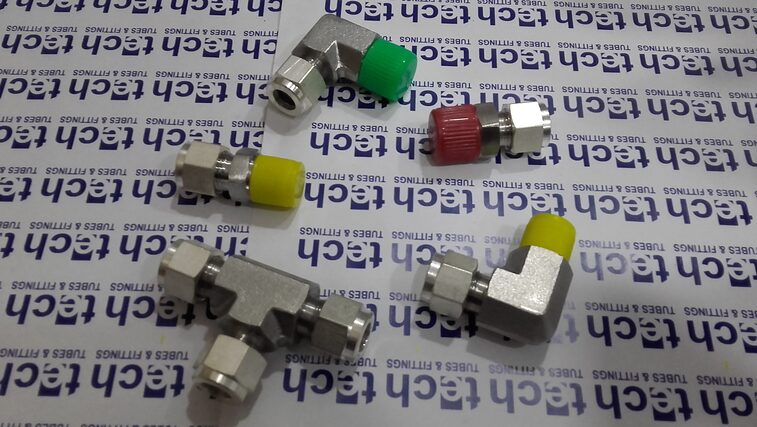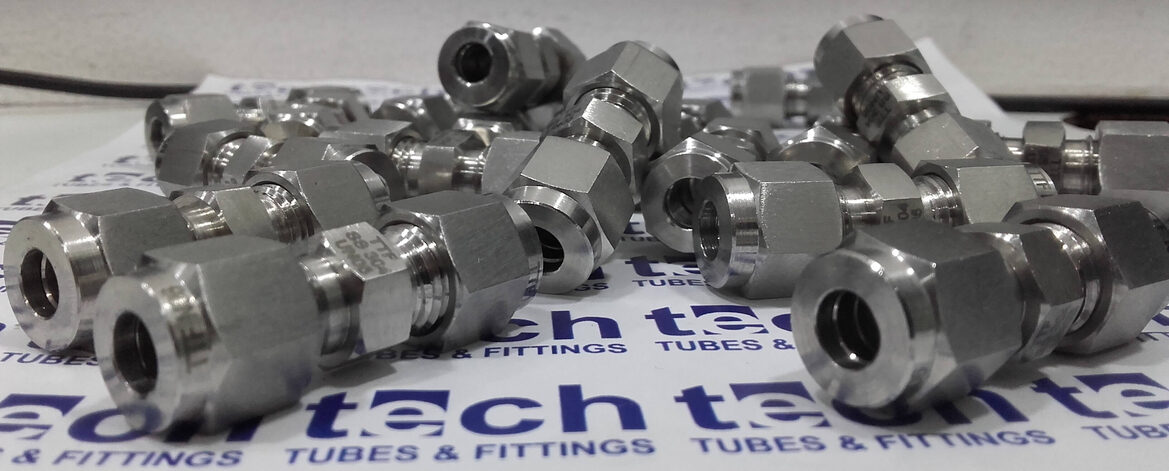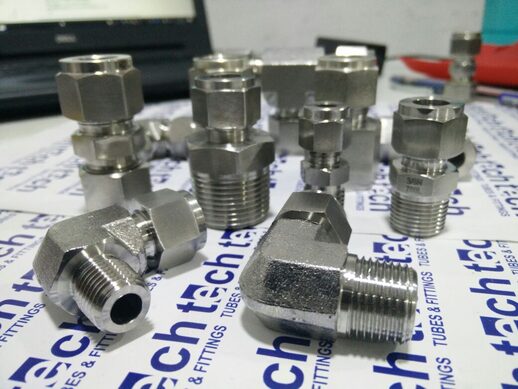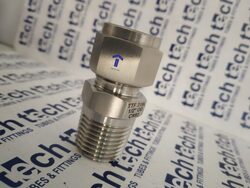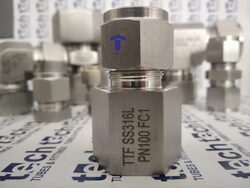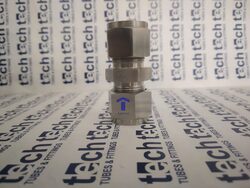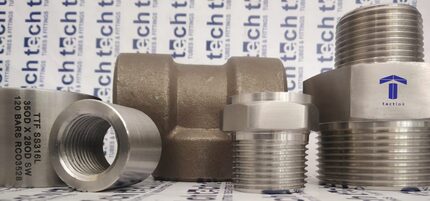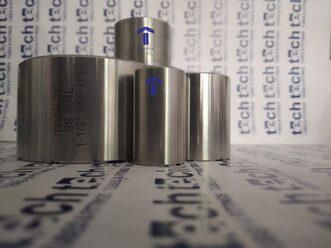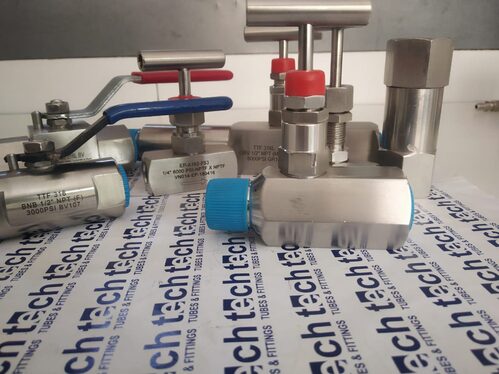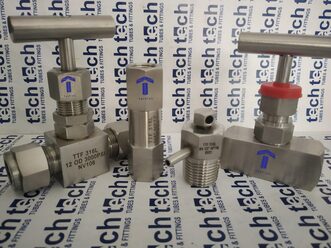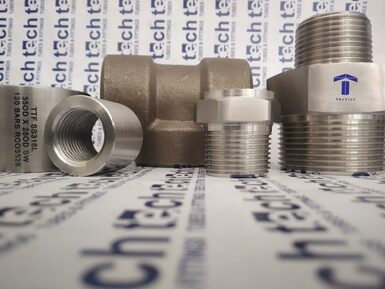
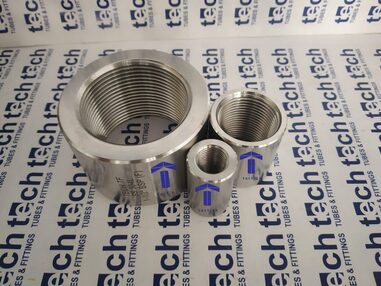
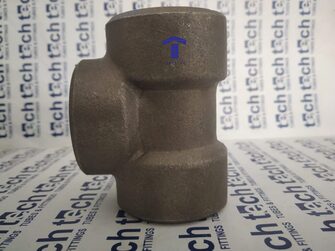
Click Here to view additional data on High-Pressure Tube Fittings
Click Here to Access our Product Gallery for Sample Photos of High-Pressure Tube Fittings
Pressure systems in the process industry use different ways of threading depending on the geographical region, size of the pressure system, and the environment. There are regional differences in threading types as well as industry preferences. For example, many pressure systems onboard ships use BSP fittings while many applications in the oil and gas industry use NPT fittings.
Check out other Products: High-Pressure Instrumentation Valves, High-Pressure Tube Fittings, High-Pressure Pipe Fittings
NPT Connections
NPT (National Pipe Thread) is the most popular type of thread for pressure systems. NPT male fittings have a taper thread that wedges into the female NPT fittings. The NPT Connections due to the "out of roundness principle" which means that the male stretches the female fitting until there is so much force that the connection can hold pressure. One of the challenges with this design is that if you connect stainless steel to stainless steel then over-tightening or poor lubrication can cause galling and damage to the threads. Thread sealant is needed to seal but only 2 turns of thread sealant are required.
BSPT Connections
BSPT (British Standard Pipe Thread) is similar to NPT except for one important difference. The angle across the flanks of threads is 55 degrees instead of 60 degrees as it is for NPT. Thus an NPT male will fit into a BSPT fitting or vice versa but they will not seal. This is a popular fitting in China and Japan but is very rarely used in North America unless the equipment to which it is attached was imported. Thread sealant is needed to seal the male and female fitting together.
BSP Connections
BSP (British Standard Parallel) is most popular in the UK, Europe, Asia, Australia, New Zealand and South Africa. It is a parallel thread fitting that uses a bonded seal ring to do the sealing. This bonded ring seal has sandwiched in-between a shoulder on the male fitting and the face of the female fitting and is squeezed in place. BSP pressure gauges have a longer male thread and use a copper crush washer that is squeezed in between the bottom of the male fitting and the bottom of the female BSP hole forming a pressure-tight seal. No thread sealant is needed to form a seal.
To view our Product Gallery click here
To contact us and send us an inquiry for NPT Fittings, BSPT Fittings, BSP Fittings click here
To fill an easy Quick Quote Form (Inquiry form) for NPT Fittings, BSPT Fittings, BSP Fittings click here
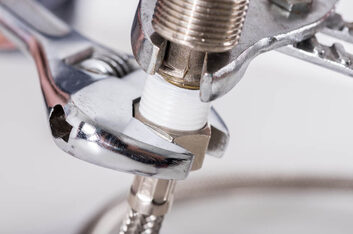
Tech Tubes & Fittings deals in a variety of NPT Fittings like A182 F304 NPT Elbow, A182 F304 NPT 3000# Elbow, A182 F316 NPT Fittings, A182 F304 NPT Fittings, A182 F304 NPT Tee, A182 F316 NPT Tee, A182 F304 NPT Plug, A182 F316 NPT Plug, A182 F304 NPT Male Run Tee, A182 F316 NPT Male Run Tee, A182 F304 NPT Male Branch Tee, A182 F316 NPT Male Branch Tee, A182 F304 NPT Male Connector, A182 F316 NPT Male Connector, A182 F304 NPT Female Connector, A182 F316 NPT Female Connector, A182 F304 NPT Nipple, A182 F316 NPT Nipple, Tech Tubes & Fittings deals in a variety of NPT Fittings like A182 F304L NPT Elbow, A182 F316L NPT Elbow, A182 F304L NPT 3000# Elbow, A182 F316L NPT 3000# Elbow A182 F316L NPT Fittings, A182 F304L NPT Fittings, A182 F304L NPT Tee, A182 F316L NPT Tee, A182 F304L NPT Plug, A182 F316L NPT Plug, A182 F304L NPT Male Run Tee, A182 F316L NPT Male Run Tee, A182 F304L NPT Male Branch Tee, A182 F316L NPT Male Branch Tee, A182 F304L NPT Male Connector, A182 F316L NPT Male Connector, A182 F304L NPT Female Connector, A182 F316L NPT Female Connector, A182 F304L NPT Nipple, A182 F316L NPT Nipple.

Tech Tubes & Fittings deals in a variety of BSPT Fittings like A182 F304 BSPT Elbow, A182 F304 BSPT 3000# Elbow, A182 F316 BSPT Fittings, A182 F304 BSPT Fittings, A182 F304 BSPT Tee, A182 F316 BSPT Tee, A182 F304 BSPT Plug, A182 F316 BSPT Plug, A182 F304 BSPT Male Run Tee, A182 F316 BSPT Male Run Tee, A182 F304 BSPT Male Branch Tee, A182 F316 BSPT Male Branch Tee, A182 F304 BSPT Male Connector, A182 F316 BSPT Male Connector, A182 F304 BSPT Female Connector, A182 F316 BSPT Female Connector, A182 F304 BSPT Nipple, A182 F316 BSPT Nipple, Tech Tubes & Fittings deals in a variety of BSPT Fittings like A182 F304L BSPT Elbow, A182 F316L BSPT Elbow, A182 F304L BSPT 3000# Elbow, A182 F316L BSPT 3000# Elbow A182 F316L BSPT Fittings, A182 F304L BSPT Fittings, A182 F304L BSPT Tee, A182 F316L BSPT Tee, A182 F304L BSPT Plug, A182 F316L BSPT Plug, A182 F304L BSPT Male Run Tee, A182 F316L BSPT Male Run Tee, A182 F304L BSPT Male Branch Tee, A182 F316L BSPT Male Branch Tee, A182 F304L BSPT Male Connector, A182 F316L BSPT Male Connector, A182 F304L BSPT Female Connector, A182 F316L BSPT Female Connector, A182 F304L BSPT Nipple, A182 F316L BSPT Nipple,
Tech Tubes & Fittings deals in a variety of BSP Fittings like A182 F304 BSP Elbow, A182 F304 BSP 3000# Elbow, A182 F316 BSP Fittings, A182 F304 BSP Fittings, A182 F304 BSP Tee, A182 F316 BSP Tee, A182 F304 BSP Plug, A182 F316 BSP Plug, A182 F304 BSP Male Run Tee, A182 F316 BSP Male Run Tee, A182 F304 BSP Male Branch Tee, A182 F316 BSP Male Branch Tee, A182 F304 BSP Male Connector, A182 F316 BSP Male Connector, A182 F304 BSP Female Connector, A182 F316 BSP Female Connector, A182 F304 BSP Nipple, A182 F316 BSP Nipple, Tech Tubes & Fittings deals in a variety of BSP Fittings like A182 F304L BSP Elbow, A182 F316L BSP Elbow, A182 F304L BSP 3000# Elbow, A182 F316L BSP 3000# Elbow A182 F316L BSP Fittings, A182 F304L BSP Fittings, A182 F304L BSP Tee, A182 F316L BSP Tee, A182 F304L BSP Plug, A182 F316L BSP Plug, A182 F304L BSP Male Run Tee, A182 F316L BSP Male Run Tee, A182 F304L BSP Male Branch Tee, A182 F316L BSP Male Branch Tee, A182 F304L BSP Male Connector, A182 F316L BSP Male Connector, A182 F304L BSP Female Connector, A182 F316L BSP Female Connector, A182 F304L BSP Nipple, A182 F316L BSP Nipple,
Monel, Hastelloy, Inconel, Incoloy, SMO254, Nitronic, PH Alloy, AL6XN, Tungsten, Stellite, Sanicro, Tantalum, Molybdenum, Zirconium, Nimonic , Alloy A286, Invar, Alloy 20, Cupronickel Cu Ni 70-30, Brass are the trademarks of their respective companies.
For any further information or query, please feel free to contact us



